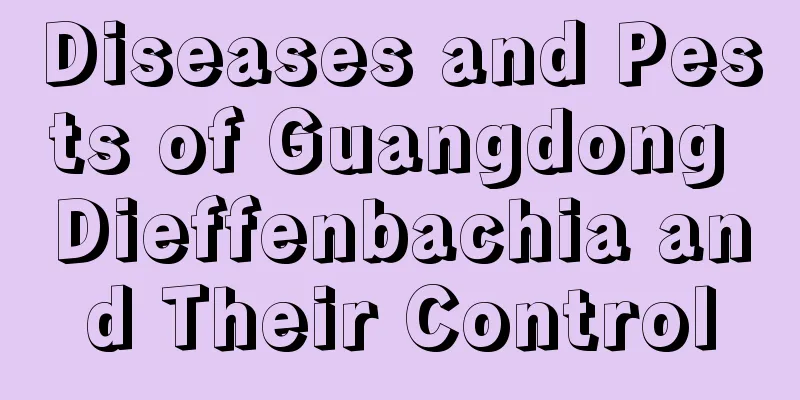Diseases and Pests of Guangdong Dieffenbachia and Their Control

Diseases of Dieffenbachia glabraLeaf spotLeaf spot is a common disease of Guangdong evergreen, and it is more likely to occur in rainy seasons. When leaf spot disease occurs on Guangdong evergreen, spots will grow on the leaves and gradually expand. The color around the spots will fade. In the later stages of the leaf spot disease, the disease will become more serious and turn black-brown. If leaf spot disease occurs in Guangdong evergreen, the diseased leaves need to be removed in time. When the disease is more serious, it can be sprayed with 1000 times diluted 50% carbendazim for treatment. anthraxAnthracnose is also a common disease of Guangdong evergreen, which mainly occurs on the leaves. In severe cases, it can develop to the leaves, causing water-soaked spots to appear on the plants. In severe cases, the spots will become one piece and black spots will appear. The occurrence of anthrax is mainly caused by poor ventilation, so ventilation needs to be strengthened during maintenance and scale insects need to be prevented and controlled. In the early stage of the disease, you can spray 800 times diluted 60% mancozeb or 1500 times diluted 70% thiophanate for prevention and control. Pests of Guangdong DieffenbachiaBrown Soft ScaleBrown soft scale is very harmful to Guangdong evergreen. Generally, brown soft scale will gather on the leaves of Guangdong evergreen, suck the sap of the plant, and secrete mucus to cause the bacteria to multiply in large numbers, resulting in blackening of stems and leaves, poor plant growth, and yellowing of leaves. In more serious cases, the plants will be full of pests. Generally, in the early stage of brown soft scale infestation, there are relatively few pests and they can be directly scraped off. However, after the nymphs hatch, it is necessary to spray pesticides. Generally, 1000 times diluted 40% malathion emulsifiable concentrate or 1000 times diluted 40% oxydemeton-methyl emulsifiable concentrate can be used for spraying. |
<<: Lemongrass leaf blight and its control
>>: Gray mold of Prunus armeniaca and its control
Recommend
How to grow lettuce well?
Lettuce is a vegetable that many people like to e...
How to care for Venus flytrap and make it grow fast
Venus flytrap growing conditions Venus flytrap li...
The breeding methods and precautions of Brazilian iron
The Brazilian ironwood is a tropical plant with a...
The Feng Shui effect of copper coin grass
The Feng Shui meaning of copper coin grass In tra...
What crops are suitable for growing in Shaanxi? What are the main cash crops grown in Shaanxi?
Shaanxi is a northern temperate and subtropical a...
Cultivation methods and precautions of Camellia Impatiens
Cultivation method of Camellia Impatiens Light an...
Cucumber seed germination method
Cucumber seeds must be disinfected before germina...
Can cactus be placed in the living room?
1. Feng Shui Effect Because of its appearance and...
How to water mint and how much water is appropriate for maintenance
Mint Watering Overview Mint likes warm and humid ...
When to use tomato balanced fertilizer (use of tomato balanced fertilizer and high potassium fertilizer)
When we were growing tomatoes, many growers were ...
What is the best month to plant autumn eggplant?
When to plant autumn eggplant Autumn eggplant is ...
How to divide Aspidistra into pots and what are the time and method for dividing the pots
Time to divide the pot of Aspidistra When you wan...
How to save cantaloupe seeds
Where do cantaloupe seeds come from? Hami melon i...
How to fertilize Rainbow Jade
Fertilization method Rainbow Jade grows slowly an...
Can chrysanthemum be cultivated hydroponically? How to cultivate hydroponically chrysanthemum
Can chrysanthemum be grown hydroponically? Chrysa...









